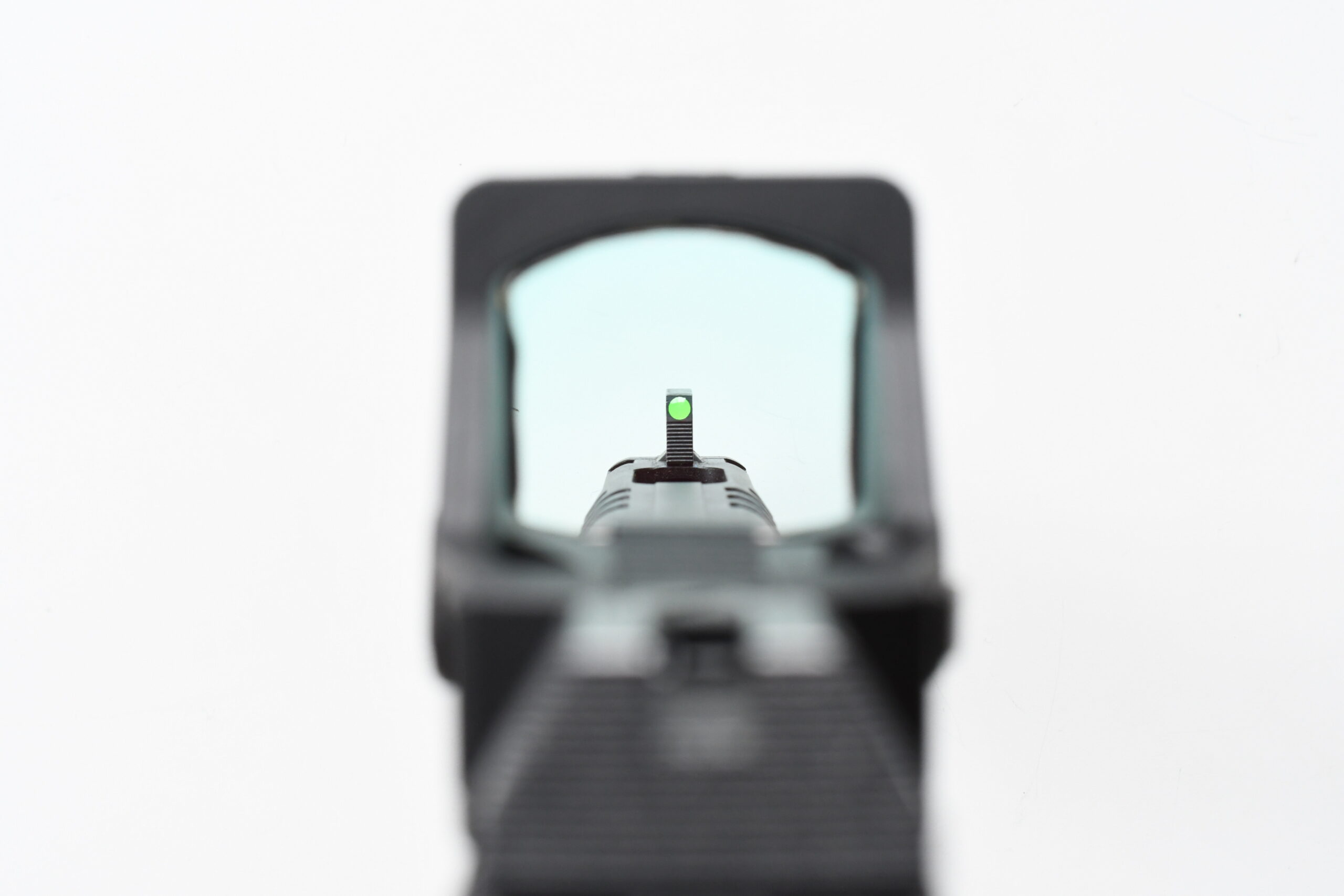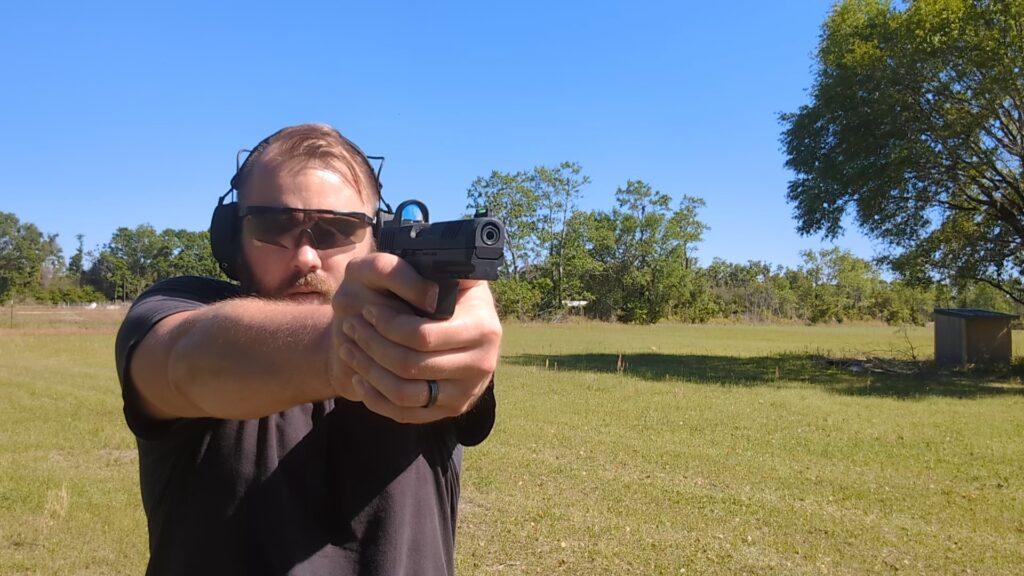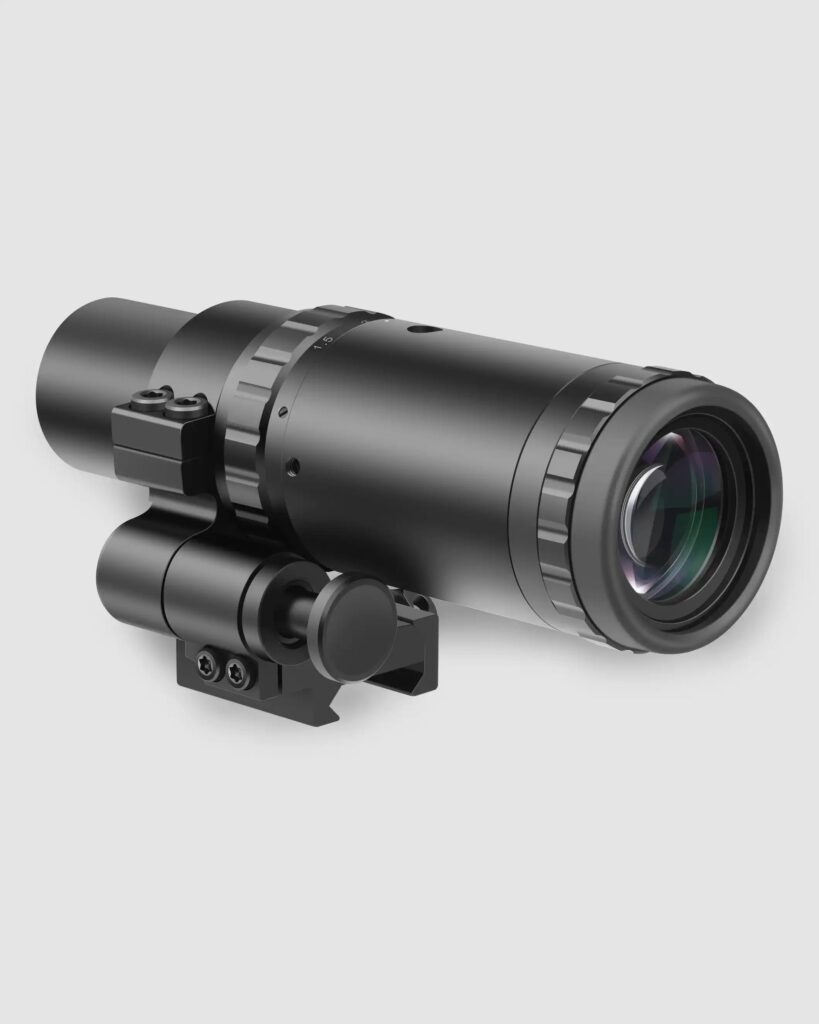This summer, Vortex Optics launched the Defender XL, a new “big window” red-dot sight. It is marketed towards action pistol competitors or those looking for a slide mounted red-dot sight with a big, easy-to-see window. The Vortex Defender XL joins the ranks—and also competes—with the likes of popular “big window” red-dots like the Trijicon SRO, the Holosun HS507 Comp, the Mecanik M03, et al.
Categorically, these types of “big-window” pistol red-dot sights, are popular amongst dedicated action pistol shooters that participate in IDPA, USPSA, or IPSC. However, they are also enjoyed by many squarely interested in their personal performance. Less obstructive views, after all, are hard to argue against regardless of shooting scenario.
Vortex Defender XL Overview
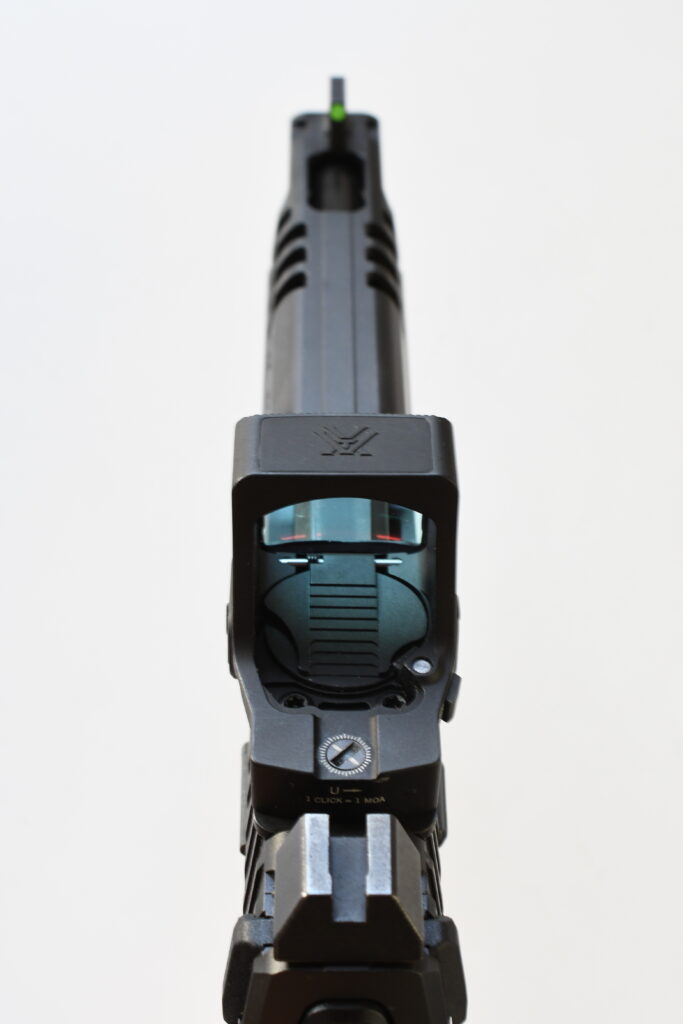
Advertisement — Continue Reading Below
The Vortex Defender XL is an open-emitter red-dot sight with a generously proportioned objective lens. They can be had with either a 5 MOA or 8 MOA solid red-dot as a reticle; Defender XLs do not have a multi-reticle system.
The Defender XL’s general shape and proportions also take after the rest of the Vortex Optics Defender series (Defender ST and Defender CCW), whose most distinctive feature has to be their “Fast-Rack” texturing. This is checkering that covers all forward facing edges of the optic that surround the objective lens.
Vortex designs its red-dots with this pattern in order to protect the front of the housing in case a shooter uses their optic to rack their pistol slide.
Advertisement — Continue Reading Below
In the same vein, the topmost part of the Defender XL housing has a rubberized shock absorbing pad in place to protect the housing from drops or unforeseen impacts. The entire body is also machined from 7075 series aluminum, the aero-space grade material that’s industry-standard for hard-use items.
Battery And Footprint
A single CR 2032 battery sitting on the top of the optic’s deck powers the Vortex Defender XL. Even though the Defender XL has a hinged battery compartment with the requisite O-rings to keep moisture out, Vortex also included a secondary latching mechanism to bolster the clamshell lid of the battery compartment.
This latch prevent’s the lid from swinging open for any reason (eg, the forces of recoil, the pistol/optic being dropped, bumped into, et cetera). Bypassing this auxiliary latch in order to access the battery compartment requires the use of a smaller flathead screwdriver or pin.
Advertisement — Continue Reading Below
Average runtimes for Vortex Defender XLs is approximately 25,000 hours. There are only four “controls” on the Defender XL, two rubberized buttons on the left or right sides of the optic used to control the brightness levels (10 daytime, 2 night vision).
The two remaining control interfaces are the windage and elevation click adjustment wheels. Like nearly every other red-dot sight on the market these are also calibrated for 1 MOA per click. The Defender XL is programmed with features such as auto-shutoff, motion activation or button-lockout.
Like the Vortex Defender ST, the Defender XL also uses the popular Leupold Delta Point Pro footprint, one of the more popular “full-size” optics mounting footprints. While immaterial vis-a-vis the Vortex Defender XL red-dot sight itself, one of the benefits of the Delta Point Pro’s footprint is its relative narrowness which allows it to get along with thinner slides such as those on 2011s or 1911s in the context of direct-milling cuts.
Advertisement — Continue Reading Below
It’s worth noting that a few Sig P320 variants also use the Delta Point Pro footprint as their default slide-cut. It would be hard to argue against a Vortex Defender XL on a Staccato or a Sig, especially for a match gun.
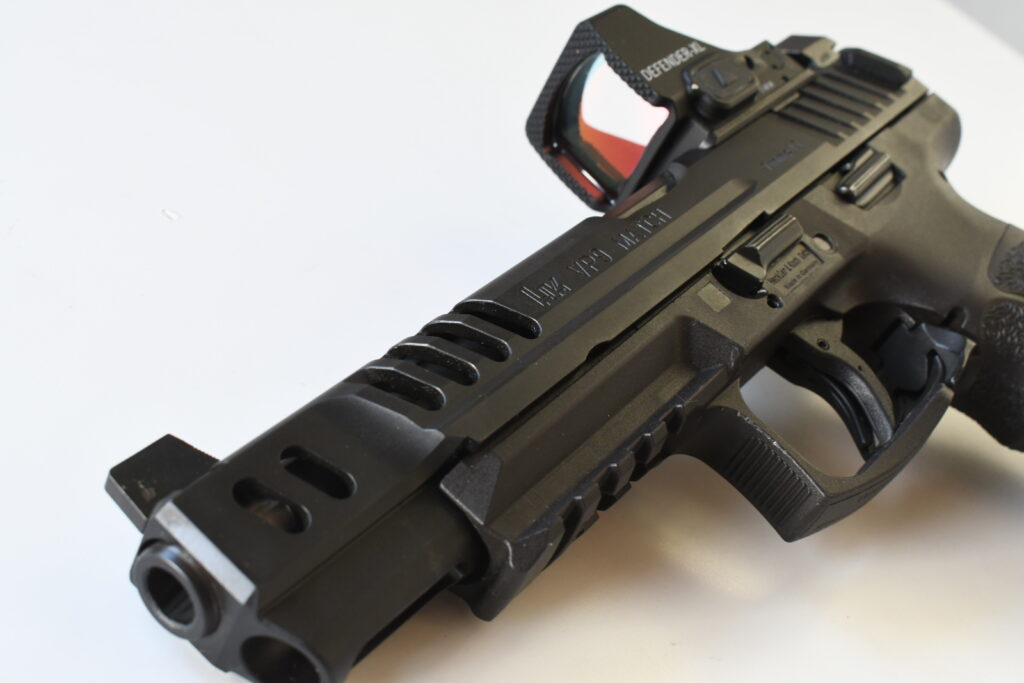
The Defender XL’s Extra Hardware And Accessories
Mounting red-dot sights to optics plates and/or pistol slides can be an exercise in frustration for the uninitiated—and those with experience.
Advertisement — Continue Reading Below
The practice of mounting a reflex sight to a handgun’s slide is fundamentally simple and only typically requires 2-4 screws, some threadlocker and a means to ensure said screws are torqued down to the correct amount of inch-pounds. However, the reality is that different makes and models of handguns, along with the different makes and models of red-dot sights, all require the correct permutation of optics-plates and specific screws with not only the correct screw thread pitch, but also a corresponding screw-head profile.
Failure in matching these things up is a sure way of ensuring red-dot mounting failures, and for pistol mounted optics, the devil is really in the details.
Vortex Makes it Easy
Many of the screws used to affix red-dot sights to slides or plates look similar to each other, even with their different thread pitches. So, it only adds to the end user’s confusion.
Advertisement — Continue Reading Below
Because I get to spend ample time with a diverse amount of firearms related optics and have felt this confusion first-hand, I was very impressed during the “unboxing” of the Vortex Defender. Vortex not only includes virtually every type of mounting screw needed to mount this sight to a pistol, but they do so in very neatly, professionally labeled baggies that denote both screw type and for which handgun they’re to be used.
Besides labeled hardware, a basic Glock MOS plate, a rubber cover, tool, lens cloth and basic Picatinny-compatible mounts are all included. For the price point of the Vortex Defender XL, the add-ons are quite comprehensive.
I think the addition of the extra Glock MOS plate is a great touch considering how popular Glock pistols are. After shooting with it, it works fine. But I’d personally rather spend extra on a higher end MOS mounting plate (if I were a dedicated Glock shooter).
Advertisement — Continue Reading Below
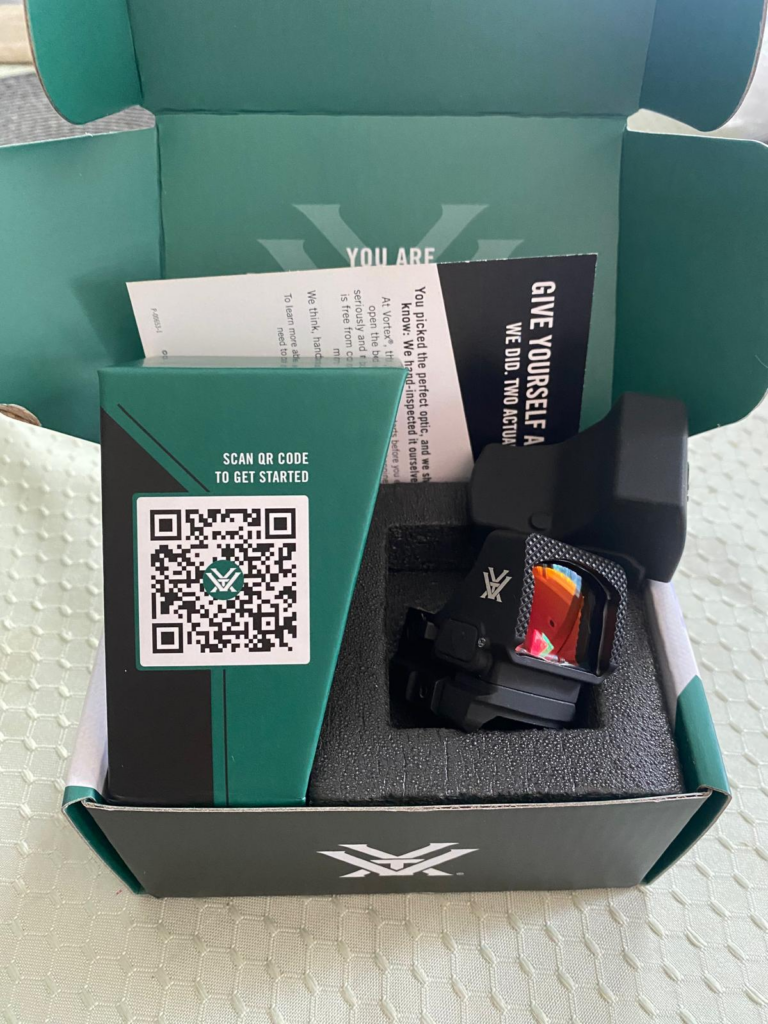

Advertisement — Continue Reading Below
